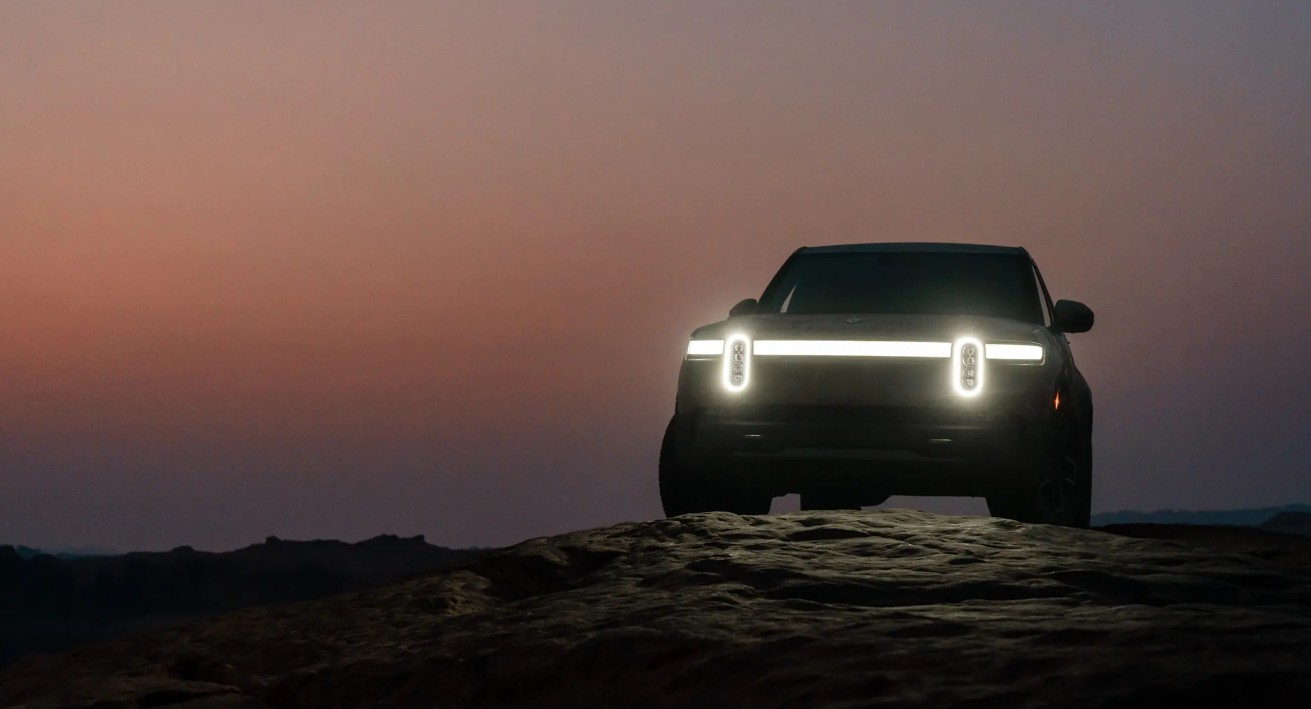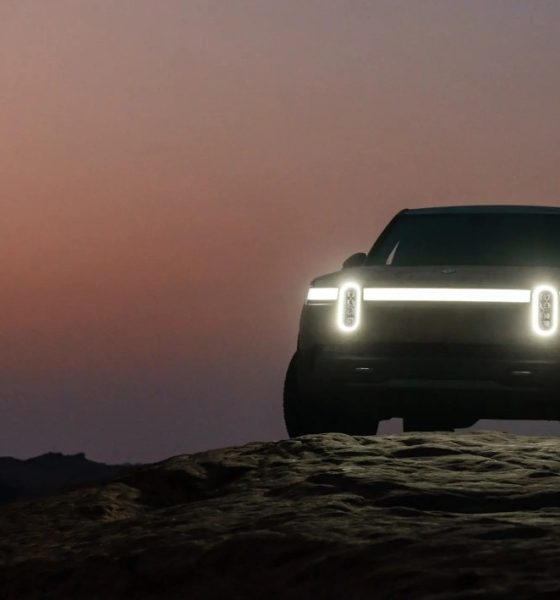Rivian Automotive Inc. is expected to price its initial public offering (IPO) later today, November 9, 2021. Morgan Stanley, Goldman Sachs, and J.P. Morgan currently stand as Rivian’s underwriters for the company’s debut. And based on filings with the Securities and Exchange Commission (SEC), Rivian is looking to enter the public markets in a big way — and it is setting its ambitions very high.
Target Valuation
Rivian has disclosed that it is targeting a valuation above $65 billion in its IPO, with shares priced between $72 and $74. Such a valuation is ambitious, as it would make Rivian’s market cap just a bit lower than veterans such as General Motors ($84.82 billion) and Ford Motor Company ($79.65 billion), the latter being a key investor in the truck maker. Similar to fellow electric vehicle maker Tesla, which currently reached a market cap above of over $1 trillion, Rivian’s valuation target is founded on the idea that the company may see a meteoric rise in the coming years.
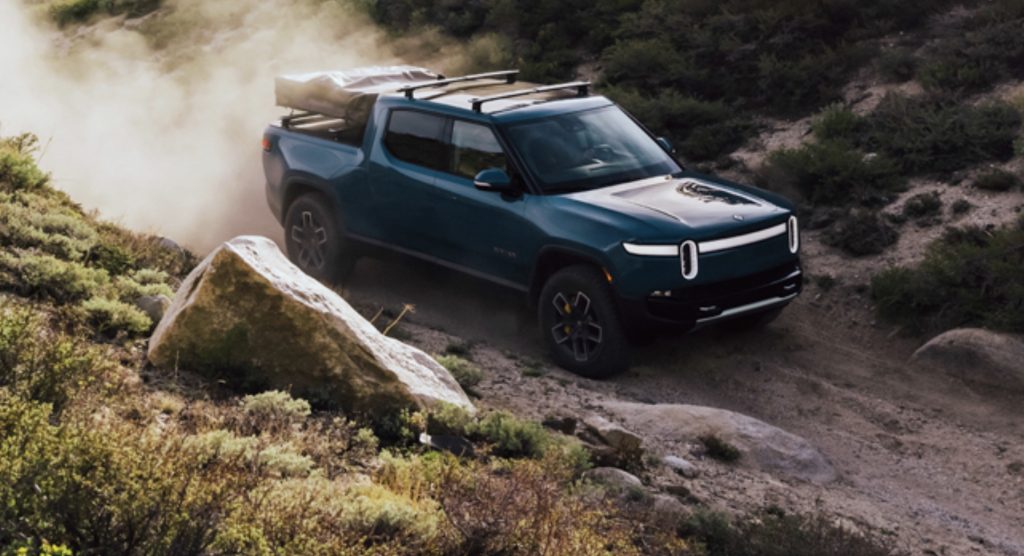
If Rivian’s shares end up selling at the top of their marketed range, the company could make history as the seventh-biggest US IPO on record, according to Bloomberg. It would also overtake longtime players in the auto segment, such as Japanese carmakers Honda Motor Co., which has a market cap of $53 billion, and French automaker Renault SA, which is valued at a conservative $11 billion.
The Finances So Far
Rivian’s S-1 filing with the SEC has provided a glimpse of the company’s finances so far. Just as expected, and similar to fellow electric vehicle makers that are just starting out, Rivian is currently burning cash, with heavy investments in R&D and high operating costs. This is likely due to the fact that the company is still learning the ropes when it comes to mass-producing its three vehicle offerings, one of which has an order for 100,000 units from Amazon, the world’s premier e-commerce site.
Rivian currently employs over 8,000 people across multiple facilities in Arizona, California, Michigan, Illinois, Vancouver, Canada, and the UK. And as the company approached the production of the R1T pickup truck and R1S SUV, its losses grew. Rivian posted a net loss of $994 million from January to June 2021, more than double the $377 million net loss it posted for the first half of 2020. Rivian’s R&D expenses are also on the rise, with the company spending $683 million in Q1 and Q2 2021. In comparison, its R&D cost for 2020 stood at $766 million. Despite this, Rivian still has about $3.6 billion in cash on its balance sheet.
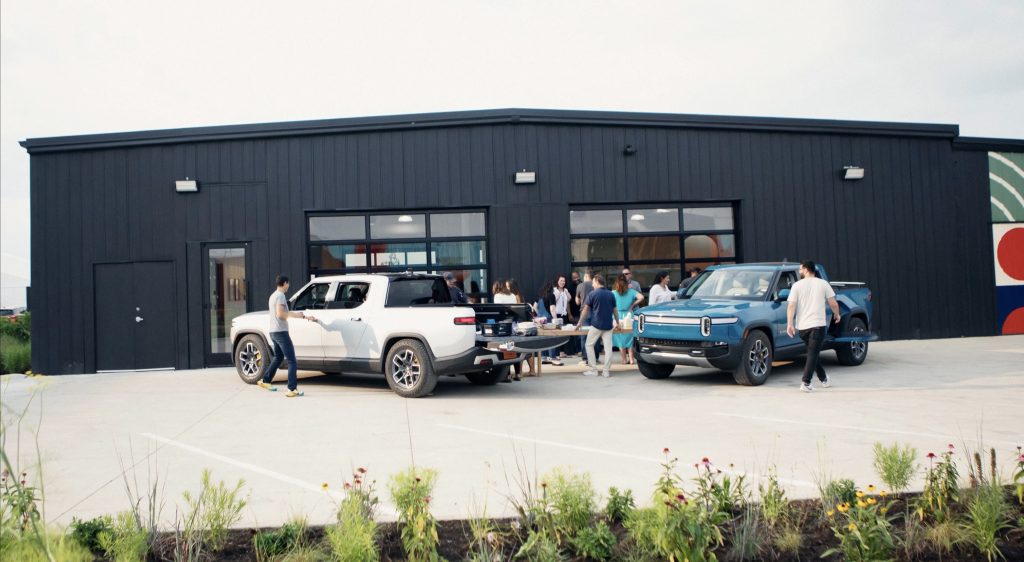
What Analysts are Saying
Rivian is quite unique among EV startups today because its already has a sure customer in Amazon, which has ordered 100,000 units of an all-electric delivery van. That being said, New Street Research analyst Pierre Ferragu stated in a note on Monday that Rivian may end up facing a “natural ceiling” of 300,000 to 400,000 units per year, partly due to the price range of its consumer vehicles, the R1T pickup truck and the R1S SUV. The R1T currently starts at $67,500 for its base model, while the R1S starts at $70,000.
“Above $70,000, the global addressable market for Rivian’s SUV and pickup is less than 1.5 million units, and it will be a crowded space,” Ferragu wrote.
Ivan Drury, a senior analyst at Edmunds, highlighted that Rivian may face an uphill climb when ramping its first vehicles, especially considering that the chip crisis is still ongoing. “It’s difficult enough for established automakers, let alone a new one. Couple that with this new issue the entire industry is dealing with, the chip crisis, that just adds another layer of complexity,” Drury noted.
Rivian’s Production Plans
Recent reports have noted that Rivian is currently focusing its resources on delivering the first batch of its Amazon delivery vans. This makes sense considering the volume of orders it has received from the e-commerce giant, but this strategy could also result in the R1T and R1S being ramped at a more deliberate pace. So far, Rivian has noted that it has received just over 55,000 pre-orders for the R1T and R1S. And since starting deliveries of the R1T, the company has only delivered 156 units of the all-electric pickup truck, “nearly all” of them to Rivian employees.
Rivian’s SEC filing has provided a bit more detail about the R1T and R1S’ rather deliberate ramp. According to the document, the company expects to fill its pre-order backlog of approximately 55,400 R1 vehicles by the end of 2023. Previous reports also note that Rivian is expected to deliver the first 10,000 units of its Amazon delivery vans by the end of 2022, with the entire 100,000-unit order being completed by the end of the decade.
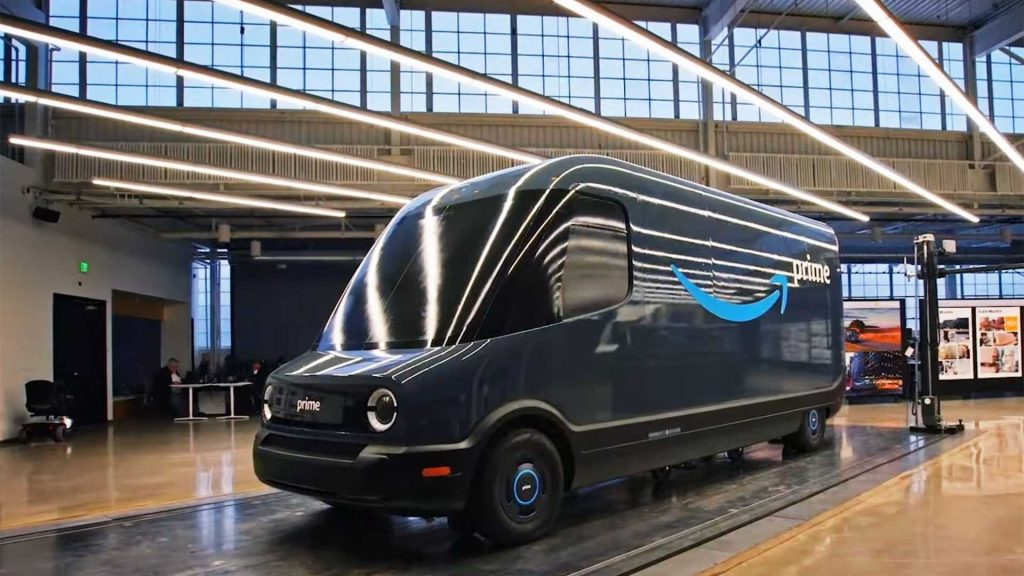
Legal Challenges to Date
Similar to other automakers, Rivian is also involved in some legal challenges. Among the more notable ones involve fellow EV maker Tesla, which has filed a suit against Rivian last year over the alleged theft of intellectual property related to recruitment, bonus and compensation plans for sales personnel, and manufacturing project management systems. A later lawsuit from Tesla also alleged that the truck maker was acquiring core technology related to its upcoming 4680 cells, which was deemed by the Silicon Valley-based company as the “most essential element for any electric vehicle.”
More recently, Laura Schwab, who was the first female President in luxury automaker Aston Martin’s history, also filed a suit against Rivian over alleged gender discrimination. Schwab served as Rivian’s Vice President of Sales and Marketing during her tenure with the company. But according to the former Rivian executive, she was routinely excluded from meetings despite her experience in the auto industry, and her warnings about the R1T and R1S’ pricing and public targets were largely ignored. Finally, Schwab noted that she was terminated by Rivian just before it went public, which effectively made her lose “millions of dollars in unvested equity on the eve of the company’s IPO.”
Conclusion
With electric vehicle maker Tesla joining the trillion-dollar club, numerous investors are now looking towards the “next Tesla.” And while not all EV startups have succeeded — hydrogen truck company Nikola is a good cautionary tale — companies like Rivian and Lucid Motors do seem to have the makings of a legitimate, and potentially profitable long-term business. This was something highlighted by Pitchbook senior mobility analyst Asad Hussain, who noted that “Rivian’s premium market valuation reflects its ownership of the entire value chain and freedom to innovate without dealing with stranded assets. Between Rivian and Lucid, the market finally has credible candidates for ‘the next Tesla.”
Would you consider investing in Rivian? Sound off in the comments below.
Don’t hesitate to contact us with news tips. Just send a message to tips@teslarati.com to give us a heads up.

News
Tesla hints at Starlink integration with recent patent
“By employing polymer blends, some examples enable RF transmission from all the modules to satellites and other communication devices both inside and outside the vehicle.”

Tesla hinted at a potential Starlink internet terminal integration within its vehicles in a recent patent, which describes a vehicle roof assembly with integrated radio frequency (RF) transparency.
The patent, which is Pub. No U.S. 2025/0368267 describes a new vehicle roof that is made of RF-transparent polymer materials, allowing and “facilitating clear communication with external devices and satellites.”
Tesla believes that a new vehicle roof design, comprised of different materials than the standard metallic or glass elements used in cars today, would allow the company to integrate modern vehicular technologies, “particularly those requiring radio frequency transmission and reception.
Tesla has recently filed a US patent application on integrating RF transparent materials into the roof structure.
“facilitating clear communication with external devices and satellites”
Tesla fleet is getting @Starlink connectivity integration soon. LFG @Tesla @elonmusk… pic.twitter.com/bLa8YtPLd1
— Chansoo Byeon (@Chansoo) December 9, 2025
Instead of glass or metallic materials, Tesla says vehicles may benefit from high-strength polymer blends, such as Polycarbonate, Acrylonitrile Butadiene Styrene, or Acrylonitrile Styrene Acrylate.
These materials still provide ideal strength metrics for crashworthiness, stiffness for noise, vibration, and harshness control, and are compliant with head impact regulations.
They would also enable better performance with modern technologies, like internet terminals, which need an uninterrupted signal to satellites for maximum reception. Tesla writes in the patent:
“By employing polymer blends, some examples enable RF transmission from all the modules to satellites and other communication devices both inside and outside the vehicle.”

One of the challenges Tesla seems to be aware of with this type of roof design is the fact that it will still have to enable safety and keep that at the forefront of the design. As you can see in the illustration above, Tesla plans to use four layers to increase safety and rigidity, while also combating noise and vibration.
It notes in the patent that disclosed examples still meet the safety requirements outlined in the Federal Motor Vehicle Safety Standards (FMVSS).
Starlink integrated directly into Tesla vehicles would be a considerable advantage for owners. It would come with a handful of distinct advantages.
Initially, the inclusion of Starlink would completely eliminate cellular dead zones, something that is an issue, especially in rural areas. Starlink would provide connectivity in these remote regions and would ensure uninterrupted service during road trips and off-grid adventures.
It could also be a critical addition for Robotaxi, as it is crucial to have solid and reliable connectivity for remote monitoring and fleet management.
Starlink’s growing constellation, thanks to SpaceX’s routine and frequent launch schedule, will provide secure, stable, and reliable internet connectivity for Tesla vehicles.
Although many owners have already mounted Starlink Mini dishes under their glass roofs for a similar experience, it may be integrated directly into Teslas in the coming years, either as an upgrade or a standard feature.
News
Tesla supplements Holiday Update by sneaking in new Full Self-Driving version
It seems Tesla was waiting for the Hardware 4 rollout, as it wanted to also deploy a new Full Self-Driving version to those owners, as it appeared in the release notes for the Holiday Update last night.

Tesla has surprised some owners by sneaking in a new Full Self-Driving version with the wide release of the Holiday Update, which started rolling out to Hardware 4 owners on Friday night.
Tesla has issued a controlled and very slow release pattern with the Holiday Update, which rolls out with Software Version 2025.44.25.5.
For the past two weeks, as it has rolled out to Hardware 3 and older Tesla owners, the company has kept its deployment of the new Software Version relatively controlled.
It seems Tesla was waiting for the Hardware 4 rollout, as it wanted to also deploy a new Full Self-Driving version to those owners, as it appeared in the release notes for the Holiday Update last night.
Tesla Full Self-Driving v14.2.1.25 made its first appearance last night to Hardware 4 owners who are members of the Early Access Program (EAP). It appears to be a slight refinement from FSD v14.2.1, which has been out for a couple of weeks.
Tesla v2025.44.25.5 Holiday update incoming
Also Full Self-Driving v14.2.1.25!!! pic.twitter.com/74D7S0UGXz
— TESLARATI (@Teslarati) December 13, 2025
Many owners welcome the new FSD version, us included, because we’ve been less than impressed with v14.2.1. We have experienced some minor regressions with v14.2.1, especially with Speed Limit recognition, Speed Profile tinkering, and parking performance.
As it stands, Full Self-Driving is still particularly impressive, but Tesla is evidently having an issue with some of the adjustments, as it is still refining some of the performance aspects of the suite. This is expected and normal with some updates, as not all of them are an improvement in all areas; we routinely see some things backtrack every once in a while.
This new FSD version is likely to take care of those things, but it also includes all of the awesome Holiday Update features, which include:
- Grok with Navigation Commands (Beta) – Grok will now add and edit destinations.
- Tesla Photobooth – Take pictures inside your car using the cabin-facing camera
- Dog Mode Live Activity – Check on your four-legged friend on your phone through periodic snapshots taken of the cabin
- Dashcam Viewer Update – Includes new metrics, like steering wheel angle, speed, and more
- Santa Mode – New graphics, trees, and a lock chime
- Light Show Update – Addition of Jingle Rush light show
- Custom Wraps and License Plates – Colorizer now allows you to customize your vehicle even further, with custom patterns, license plates, and tint
- Navigation Improvements – Easier layout and setup
- Supercharger Site Map – Starting at 18 pilot locations, a 3D view of the Supercharger you’re visiting will be available
- Automatic Carpool Lane Routing – Navigation will utilize carpool lanes if enabled
- Phone Left Behind Chime – Your car will now tell you if you left a phone inside
- Charge Limit Per Location – Set a charge limit for each location
- ISS Docking Simulator – New game
- Additional Improvements – Turn off wireless charging pad, Spotify improvements, Rainbow Rave Cave, Lock Sound TRON addition
Tesla also added two other things that were undocumented, like Charging Passport and information on USB drive storage to help with Dashcam.
Cybertruck
Tesla updates Cybertruck owners about key Powershare feature

Tesla is updating Cybertruck owners on its timeline of a massive feature that has yet to ship: Powershare with Powerwall.
Powershare is a bidirectional charging feature exclusive to Cybertruck, which allows the vehicle’s battery to act as a portable power source for homes, appliances, tools, other EVs, and more. It was announced in late 2023 as part of Tesla’s push into vehicle-to-everything energy sharing, and acting as a giant portable charger is the main advantage, as it can provide backup power during outages.
Cybertruck’s Powershare system supports both vehicle-to-load (V2L) and vehicle-to-home (V2H), making it flexible and well-rounded for a variety of applications.
However, even though the feature was promised with Cybertruck, it has yet to be shipped to vehicles. Tesla communicated with owners through email recently regarding Powershare with Powerwall, which essentially has the pickup act as an extended battery.
Powerwall discharge would be prioritized before tapping into the truck’s larger pack.
However, Tesla is still working on getting the feature out to owners, an email said:
“We’re writing to let you know that the Powershare with Powerwall feature is still in development and is now scheduled for release in mid-2026.
This new release date gives us additional time to design and test this feature, ensuring its ability to communicate and optimize energy sharing between your vehicle and many configurations and generations of Powerwall. We are also using this time to develop additional Powershare features that will help us continue to accelerate the world’s transition to sustainable energy.”
Owners have expressed some real disappointment in Tesla’s continuous delays in releasing the feature, as it was expected to be released by late 2024, but now has been pushed back several times to mid-2026, according to the email.
Foundation Series Cybertruck buyers paid extra, expecting the feature to be rolled out with their vehicle upon pickup.
Cybertruck’s Lead Engineer, Wes Morrill, even commented on the holdup:
As a Cybertruck owner who also has Powerwall, I empathize with the disappointed comments.
To their credit, the team has delivered powershare functionality to Cybertruck customers who otherwise have no backup with development of the powershare gateway. As well as those with solar…
— Wes (@wmorrill3) December 12, 2025
He said that “it turned out to be much harder than anticipated to make powershare work seamlessly with existing Powerwalls through existing wall connectors. Two grid-forming devices need to negotiate who will form and who will follow, depending on the state of charge of each, and they need to do this without a network and through multiple generations of hardware, and test and validate this process through rigorous certifications to ensure grid safety.”
It’s nice to see the transparency, but it is justified for some Cybertruck owners to feel like they’ve been bait-and-switched.
